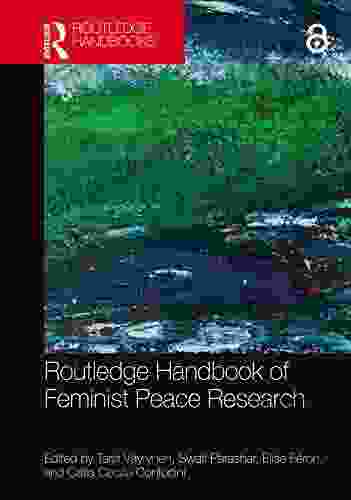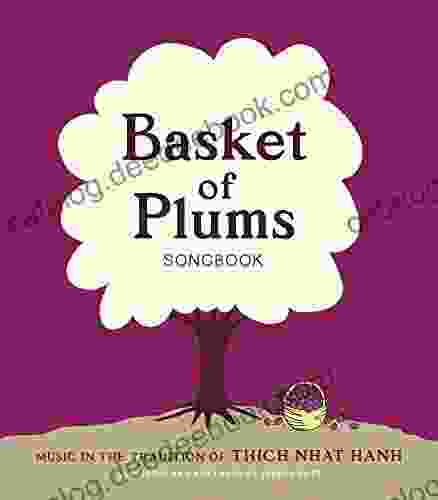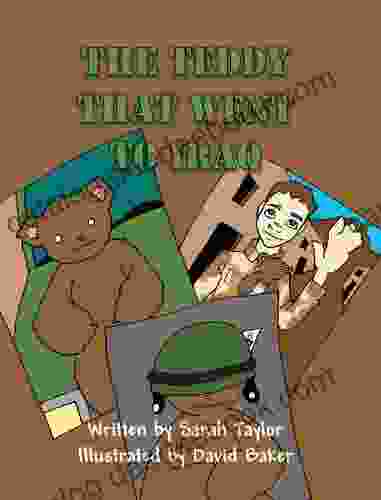Vernacular English Reading: The Anglophone in Postcolonial India

The history of English reading in India is a complex and contested one. English was first introduced to India by the British in the 18th century, and it quickly became the language of administration, education, and commerce. However, the vast majority of Indians did not speak English, and so the reading of English literature was initially confined to a small elite.
4.7 out of 5
| Language | : | English |
| File size | : | 10202 KB |
| Text-to-Speech | : | Enabled |
| Screen Reader | : | Supported |
| Enhanced typesetting | : | Enabled |
| Word Wise | : | Enabled |
| Print length | : | 319 pages |
In the 20th century, the rise of Indian nationalism and the struggle for independence led to a growing desire among Indians to read English literature in their own languages. This desire was fueled by a number of factors, including the need to understand the British colonial power, the desire to learn about other cultures, and the belief that English literature could help to create a new Indian identity.
The development of vernacular English reading in India was a gradual process. In the early 20th century, a number of Indian writers began to translate English literature into their own languages. These translations were often serialized in newspapers and magazines, and they helped to introduce English literature to a wider Indian audience.
After independence in 1947, the Indian government made a concerted effort to promote vernacular English reading. The government established a number of publishing houses that specialized in publishing translations of English literature, and it also introduced a number of policies that encouraged the use of English in education.
As a result of these efforts, vernacular English reading became increasingly popular in India. By the end of the 20th century, there were over 100 million vernacular English readers in India, and English literature had become an important part of Indian culture.
The rise of vernacular English reading in India has had a number of significant consequences. First, it has helped to create a more inclusive Indian literary culture. Prior to the development of vernacular English reading, Indian literature was largely confined to the elite. However, with the advent of vernacular English reading, Indian literature became accessible to a much wider audience.
Second, vernacular English reading has helped to shape the development of Indian English literature. Indian English writers have often used vernacular English to explore themes of Indian culture and society. This has led to the development of a distinctive Indian English literature that is both rooted in Indian culture and informed by Western literary traditions.
Third, vernacular English reading has played a role in the development of Indian nationalism. The reading of English literature has helped to create a sense of common identity among Indians. It has also helped to foster a sense of pride in Indian culture and history.
The history of vernacular English reading in India is a complex and contested one. However, there is no doubt that vernacular English reading has played a significant role in the development of Indian culture and society.
The Anglophone in Postcolonial India
The term "Anglophone" is used to describe people who speak English as their first or primary language. In India, the Anglophone community is a relatively small one, but it has played a significant role in the development of Indian society and culture.
The Anglophone community in India is made up of a diverse group of people. Some Anglophones are descended from British colonists, while others are the children of Indian parents who were educated in English-medium schools. Still others are immigrants from other English-speaking countries.
Despite their diverse backgrounds, Anglophones in India share a common experience of being both insiders and outsiders. They are insiders in the sense that they are part of the Indian elite. They have access to the best education and job opportunities, and they play a leading role in Indian society and culture.
However, Anglophones in India are also outsiders in the sense that they are not fully accepted by the majority of Indians. They are often seen as being too Westernized, and they are sometimes accused of being out of touch with the needs of the common people.
The experience of being both insiders and outsiders has led Anglophones in India to develop a unique perspective on Indian society and culture. They are able to see both the strengths and weaknesses of Indian society, and they are often able to offer unique insights into the country's challenges and opportunities.
Anglophones in India have made significant contributions to the country's development. They have played a leading role in the independence movement, they have helped to build India's modern economy, and they have made important contributions to Indian literature, art, and music.
However, the Anglophone community in India also faces a number of challenges. One challenge is the growing gap between the Anglophone elite and the majority of Indians. This gap is due in part to the fact that Anglophones have access to better education and job opportunities than the majority of Indians. It is also due to the fact that Anglophones often live in separate communities from the majority of Indians.
Another challenge facing the Anglophone community in India is the rise of Hindu nationalism. Hindu nationalists believe that India should be a Hindu nation, and they are often hostile towards Anglophones, who are seen as being too Westernized.
Despite these challenges, the Anglophone community in India continues to play a significant role in the country's development. Anglophones are well-educated and have access to the best resources, and they are often able to offer unique insights into the country's challenges and opportunities.
The history of vernacular English reading in postcolonial India is a complex and contested one. However, there is no doubt that vernacular English reading has played a significant role in the development of Indian culture and society. The Anglophone community in India is a relatively small one, but it has also played a significant role in the country's development. Anglophones have made important contributions to Indian literature, art, and music, and they continue to play a role in the country's development today.
4.7 out of 5
| Language | : | English |
| File size | : | 10202 KB |
| Text-to-Speech | : | Enabled |
| Screen Reader | : | Supported |
| Enhanced typesetting | : | Enabled |
| Word Wise | : | Enabled |
| Print length | : | 319 pages |
Do you want to contribute by writing guest posts on this blog?
Please contact us and send us a resume of previous articles that you have written.
 Novel
Novel Story
Story Paperback
Paperback E-book
E-book Magazine
Magazine Newspaper
Newspaper Paragraph
Paragraph Shelf
Shelf Glossary
Glossary Bibliography
Bibliography Preface
Preface Annotation
Annotation Footnote
Footnote Tome
Tome Bestseller
Bestseller Classics
Classics Library card
Library card Memoir
Memoir Reference
Reference Encyclopedia
Encyclopedia Dictionary
Dictionary Catalog
Catalog Card Catalog
Card Catalog Borrowing
Borrowing Periodicals
Periodicals Study
Study Lending
Lending Reserve
Reserve Academic
Academic Journals
Journals Reading Room
Reading Room Special Collections
Special Collections Interlibrary
Interlibrary Literacy
Literacy Thesis
Thesis Dissertation
Dissertation Storytelling
Storytelling Book Club
Book Club Theory
Theory Textbooks
Textbooks Pauline Shanks Kaurin
Pauline Shanks Kaurin Regina M Marchi
Regina M Marchi Matthew Naughtin
Matthew Naughtin Lynn Fujiwara
Lynn Fujiwara Maxim Gorki
Maxim Gorki Nicholson Baker
Nicholson Baker Dawson Nichols
Dawson Nichols Samuel Ze Anni
Samuel Ze Anni Julie Salamon
Julie Salamon Stacy Connelly
Stacy Connelly Brian Edwards
Brian Edwards Akira Miura
Akira Miura Mark Goldblatt
Mark Goldblatt Stephanie Marohn
Stephanie Marohn James R Evans
James R Evans Jean Gael Reboul
Jean Gael Reboul Tom Corson Knowles
Tom Corson Knowles Diana K Schwam
Diana K Schwam Jean Knox
Jean Knox Philip Pullman
Philip Pullman
Light bulbAdvertise smarter! Our strategic ad space ensures maximum exposure. Reserve your spot today!
 Houston PowellFollow ·13.1k
Houston PowellFollow ·13.1k Harry CookFollow ·5.5k
Harry CookFollow ·5.5k William ShakespeareFollow ·17.6k
William ShakespeareFollow ·17.6k Brandon CoxFollow ·2.4k
Brandon CoxFollow ·2.4k Amir SimmonsFollow ·3.7k
Amir SimmonsFollow ·3.7k Juan RulfoFollow ·14.1k
Juan RulfoFollow ·14.1k Rob FosterFollow ·2.9k
Rob FosterFollow ·2.9k Banana YoshimotoFollow ·2.7k
Banana YoshimotoFollow ·2.7k

 Hayden Mitchell
Hayden MitchellThe Routledge Handbook of Feminist Peace Research: A...
The Routledge...

 Joe Simmons
Joe SimmonsUnveiling the Lyrical Mastery of Henri Cole's "Blizzard...
In the realm of...

 E.E. Cummings
E.E. CummingsEast End Hardman To Tv Star: The Unlikely Rise Of Danny...
Danny Dyer is one of the...

 Eli Brooks
Eli BrooksMusic in the Tradition of Thich Nhat Hanh: A Journey of...
In the heart of...

 Samuel Ward
Samuel WardAmazing Scenes in Plastic Canvas: Bringing Your...
Plastic canvas is a...

 E.E. Cummings
E.E. CummingsA Comprehensive Guide to Non-Jazz Improvisation for...
: Embracing the Art of...
4.7 out of 5
| Language | : | English |
| File size | : | 10202 KB |
| Text-to-Speech | : | Enabled |
| Screen Reader | : | Supported |
| Enhanced typesetting | : | Enabled |
| Word Wise | : | Enabled |
| Print length | : | 319 pages |












